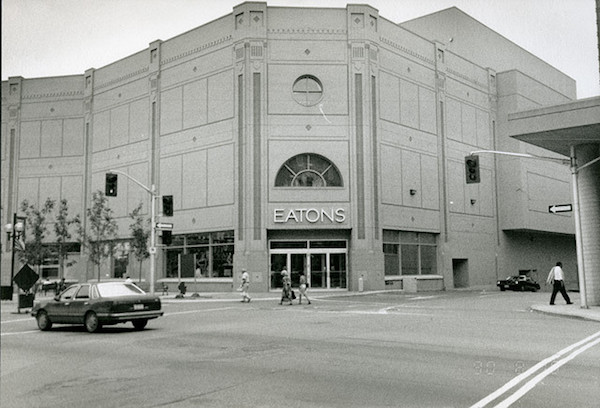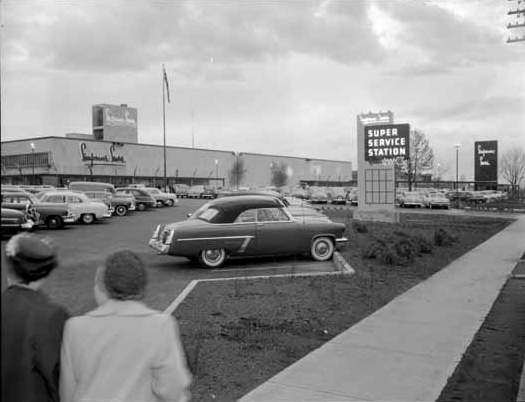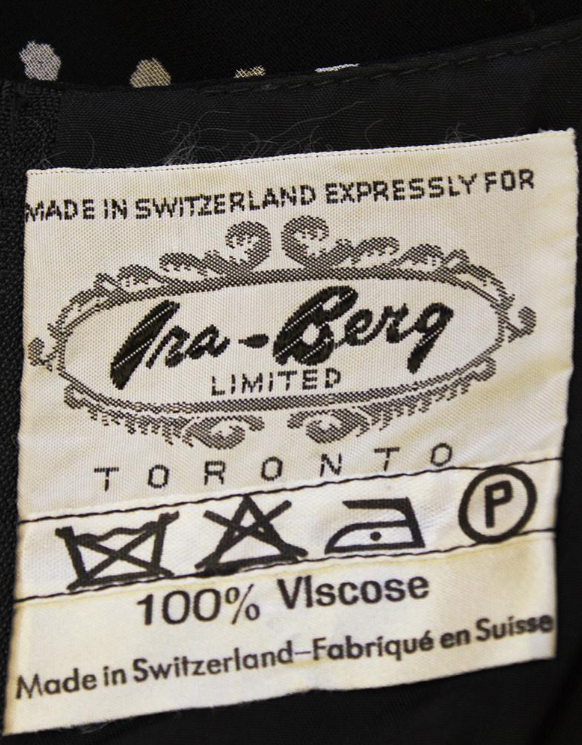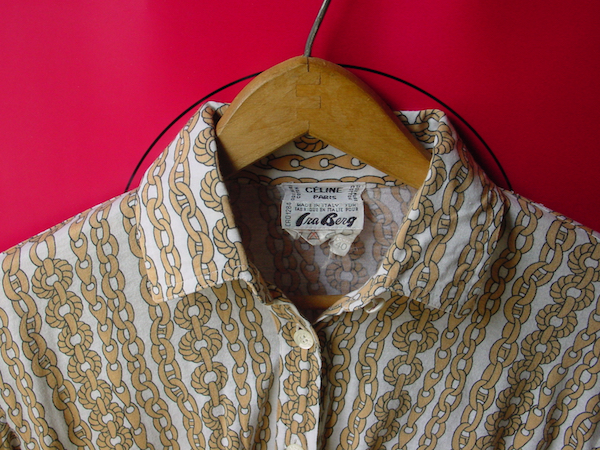Although Canada is a young country at just over 150-years-old, the nation has a long history of retailers that have come and gone.
In some respects, retail was the foundation of Canada — the Hudson’s Bay Company was originally a fur trader that opened outposts across “Rupert’s Land,” and over time transitioned to the department stores of today. Fortunately, Hudson’s Bay is still around…at least for now.
Over the years we’ve lost a few very special retailers in Canada. Let’s take a trip down memory lane.
Eaton’s

The Eaton family was once regarded as royalty, and they operated a chain of department stores coast-to-coast. Timothy Eaton founded Eaton’s in 1869 in Toronto and it grew to become a retail and social institution in Canada, with stores around the country and buying offices around the world. Eaton’s also mailed out its super-popular Eaton’s catalogue to millions of Canadians.
Eaton’s slogan was “Goods Satisfactory or Money Refunded.” The retailer opened gigantic downtown flagships in Canadian cities such as Winnipeg, Montreal, and Vancouver, with some spanning almost a million square feet over eight or more floors.
Until the 1950s, Eaton’s could claim to be the “largest retail organization in the British Empire.”
The claim was no doubt true, as it once accounted for a significant portion of all retail sales in Canada. In 1930, it was responsible for 60% of all department store sales in Canada.
Eaton’s opened downtown shopping centres in many Canadian cities, and named them “Eaton Centre.” The retailer also opened many stores in the suburbs and essentially saturated the country with its stores.
Other department store chains began to see increased success — Hudson’s Bay opened units across the country, as did Sears and a number of local chains. Mismanagement and experimenting with “Everyday Value Pricing” and going “upscale” ultimately led to its demise. By 1997, Eaton’s had only 10.5% of department store sales in Canada, the same year that it declared bankruptcy. The chain folded in 1999 and was bought out by Sears Canada.
Sears Canada, which bought Eaton’s for $50-milllion, renovated and re-opened eight Eaton’s flagships in an attempt to turn things around. It was hard to secure brands, and competitors such as Hudson’s Bay threatened to pull wholesale accounts if Eaton was provided some of the same. All stores closed in 2002.
Woodward’s
Western Canada was once home to its own homegrown chain of departments stores named Woodward’s, and many still talk about the retailer. Woodward’s was founded by Charles Woodward in 1902 in Vancouver with a tiny store on Main Street. A couple of decades later, Woodward’s occupied a 700,000 square foot building on West Hastings Street as it began expanding into cities such as Edmonton.
In the 1950s, shopping centres began to pop-up in Canada, and Woodward’s even co-developed some of the malls where it opened stores. Woodward’s sold almost everything — family fashions, home goods, and even groceries in its popular “Woodward’s Food Floor” grocery departments. Woodward’s had a famous “$1.49″ jingle, and the creator of the tune passed away last month in his ’90s.
Woodward’s carried some of the same designers as Hudson’s Bay and Eaton’s, and all three were fierce competitors in Western Canada, where some malls had all three stores.Many considered Woodward’s to be the most “fashion forward” of the three.
Woodward’s expanded quickly as it gained traction, only to be hit by the recession of the early 1990s like so many other now defunct retailers.
Woodward’s declared bankruptcy in 1993 and the Hudson’s Bay Company converted many Woodward’s stores to Hudson’s Bay stores, amid sadness. As well, Woodward’s owned Abercrombie & Fitch Canada which had four unique department stores in Vancouver, Edmonton, Toronto and Montreal. Hudson’s Bay unfortunately closed these when it bought Woodward’s assets.
Simpsons

Another venerable department store chain, Simpsons has a long history in Canada. Founder Robert Simpson opened this first store in 1858 in the town of Newmarket, north of Toronto, and the store burned down in 1870. Mr. Simpson moved his store to Toronto in 1872 and in 1896, he built a beautiful flagship store at 176 Yonge Street, at the southwest corner of Queen Street. Robert Simpson died in 1897, unfortunately, and the business was taken over by three local entrepreneurs, who expanded Simpsons into a national chain of department stores.
Simpsons became known for its upscale offerings — in 1937 it debuted the “St. Regis Room,” a luxury department with designers such as Christian Dior. Simpsons also opened stores in cities such as Montreal, Ottawa, and London (Ontario), and all became social hubs.
In 1952, Simpsons partnered with Amercian department store chain Sears Roebuck and Company to form a chain called Simpsons-Sears Limited, which operated stores across the country including Vancouver and Regina, as well as in Ontario and Quebec. I
In the 1960s, Simpsons-Sears was one of the first companies in Canada to start using computers at their locations, with enormous rooms with special ventilation housing massive IBM punch card main frame machines.
The Hudson’s Bay Company acquired Simpson’s in 1978 and according to competition law, the Sears partnership ended. The Hudson’s Bay Company kept most Simpsons stores in operation but sales began to dwindle — in 1984 sales were said to have been down 25% over five years, resulting in layoffs.
In 1989, the Simpsons flagship store on Queen Street in Toronto, which had grown to nearly a million square feet over 10 retail floors, saw a $30-million renovation as it relaunched as the “Miracle on Queen Street.” It had the largest cosmetics department in the world, a gourmet food hall in the basement, and luxury fashions as well as shops for brands such as Alfred Dunhill London. Several TV shows and movies were filmed in the store — it features prominently in the opening of 1980s movie Short Circuit 2, and popular children’s TV program Today’s Special was partly filmed in the store.
Sales continued to slump and Bay/Simpsons operations were merged in 1989. That quickly led to Hudson’s Bay getting rid of the Simpsons name entirely — flagships in Montreal, Ottawa, and London closed down, and in 1991, the Hudson’s Bay Company converted the massive Simpsons flagship to what we now know as “Hudson’s Bay on Queen” at the CF Toronto Eaton Centre. Today, Saks Fifth Avenue occupies part of the historic building.
Ira Berg

Entrepreneur Ira Berg made history in 1937 when he opened a store by the same name at the corner of Yonge Street and St. Clair street, back when the area was considered to be Toronto’s “uptown” (Yonge north of Eglinton was still a dirt road, imagine that!). Ira Berg unfortunately passed away in 1953 and his son Russel took over the business. He moved the store to 1510 Yonge Street (at the southwest corner of Delisle Street) in 1968, occupying the entire building.
In 1976, Ira Berg expanded into an adjacent building and opened North America’s first standalone location for Paris-based designer Celine. Ira Berg originally carried dresses and outerwear — back then, women didn’t really wear “sportswear.”
For years, Ira Berg was the only retailer carrying the Celine line, and even opened a Celine boutique at 110 Bloor Street West.

Ira Berg also carried brands such as Akris (the only location in Toronto), Genny (designed by Versace), Byblos, Claude Montana, Versace, Bottega Veneta, Prada, Tod’s, Brunello Cucinelli, and Pratesi Linens — all were either exclusive to Toronto or Canada. Ira Berg opened Canada’s first Donna Karan/DKNY boutique and the store even had a small cosmetics area, and was the first store in Canada to carry the popular Kiehl’s line.
Ira Berg was the launch partner of Louis Vuitton in Canada, with stores in Toronto (110 Bloor Street West), Vancouver (Holt Renfrew), and Montreal (Ogilvy) between 1986 and 1995.
The Berg family also owned two Benetton stores, some of the first in Canada, before the Italian fashion chain grew to more than 50 stores coast-to-coast (all have since closed, sadly).
Ira Berg was known for its trunk shows, fine tailoring (with 16 seamstresses on staff), and was the first store in Toronto to open an in-store coffee bar, and it even had a popular hair salon called “The Private World of Mary Tripi.”
A tough economy in the 1990s and changing fashion tastes resulted in Ira Berg going bankrupt and closing in 1998. While we mourn the loss of Ira Berg, something good came of it — StyleDemocracy! Russel and son Michael learned how to create a business that clears out excess inventory, and it’s been successful to this day.
Featured image: Wikimedia Commons
Articles You Might Be Interested In:
The Story Of What Really Happened To Sears
9 Retailers That Went Out Of Business Or Closed Stores In 2018
7 U.S. Retailers That Just Couldn’t Make It In Canada
4 International Brands Coming To Canada In 2019
The Crazy Story Of What Really Happened To Target
